
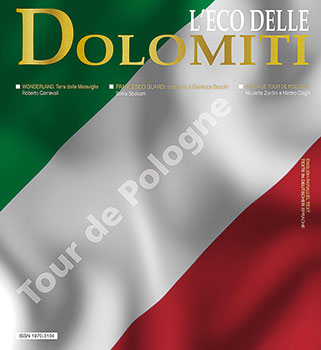
EMERCOM: THE PROFESSION OF A “RESCUER”
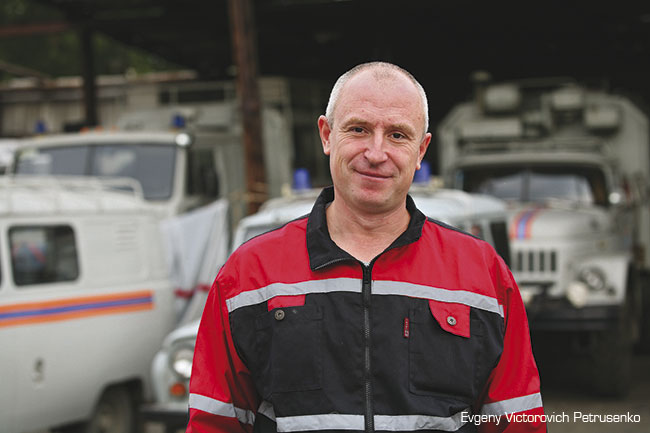
The profession of a “rescuer” appeared a long time ago, but it was not defined into a separate profession and it was not taught at educational institutions. There existed firefighters, divers, industrial abseilers, and lifeboat services in Russia. There were earthquakes in Tashkent In 1966 and Armenia in 1989, and the Chernobyl meltdown in 1986, but it was soldiers, doctors and firefighters who worked there. It was not until the beginning of the 90s when the first search and rescue groups were established.
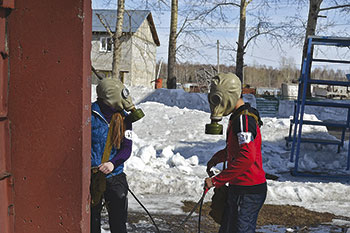
The genesis of EMERCOM starts on December 27, 1990, when the Ministry Council of the Russian Soviet Federative Socialist Republic formed a corps of rescuers. Later, on January 10, 1994, under the auspices of the State Committee of the Russian Federation for Matters Relating to Civil Defense, Emergency Situations and the Elimination of Consequences of Natural Disasters, it was reorganized into The Ministry of the Russian Federation for Civil Defense, Emergencies and Elimination of Consequences of Natural Disasters (EMERCOM of Russia). The need for this profession appeared as a result of the sustainable growth in the number and scale of emergency situations of natural anthropogenic character. The number of anthropogenic disasters has drastically risen due to general industrial decline, outflow of skilled labor and underfinancing of industries and repair works. Rescuers are one of the most interesting and courageous jobs. They are the first to arrive at emergency sites. It is not enough for a rescuer to be physically strong, specifically trained, decisive and courageous, he should also love people. Being a rescuer is a vocation. An indifferent person could not risk his life for the sake of another person. The major focus of these individuals is saving people's lives. It is very rare that the rescuers work alone, most often they are in a team, which works very quickly and concertedly in difficult situations, while a lot of hands and equipment are needed to clear up a blockage or a crash scene, to fight fires or to save a drowning individual. There are neither days nor nights for the rescuer; he is always kept on standby and ready to help at any time. People working in the rescue service possess many skills and abilities. They can take first aid measures, conduct accident rescue operations, make a reconnaissance and search for the victims, work on emergency containment or monitor the environment after an accident.

But, fortunately, all these accidents, floods, natural disasters, ecological calamities and emergency situations happen not so frequently in our everyday life. However, there is always work for the rescuer in the daily routine as well. They help to open an entrance door, if it has been slammed and there is no key, or if the person living there has become ill, he will provide medical assistance as well. Rescue workers also help in the search of people lost in the woods, and rescuers help people trapped in cars in traffic accidents. They also save fishermen from drifting ice-floes. They will surely come to rescue of animals stuck in a manhole or drainpipe, and even those unable to climb down from a tree. But the work of the rescuers is not only interesting and romantic; it is very hard and dangerous. It is not for nothing that many rescuers were posthumously decorated with an award or a medal for their labor. But the main award for them is the gratitude of the people, to whom they gave a “new lease on life.”
Rescuers are amazing people who, without any hesitation, are ready to sacrifice their lives for the sake of saving humanity. Thus rescuers appear when people need help. Despite all the hardships of this job, a growing number of rescuers choose this difficult destiny, and are ready to endure someone else’s pain as their own, who are willing to fight the elements and fate, expressing courage and professionalism. These have memorized the main slogan of the rescuers : “Survive and save!”
The history of Altai Rescuers starts from January 1966, when the board of the Altai Regional Trade Council declared the foundation of the Altai control-and-rescuing service located in Gorno-Altaisk. The creation of the service was based on the fact that hundreds of thousands of Russians were keen on active recreation and there was a massive network of tourism and mountain centers, sightseeing agencies and clubs.
And in January 1981 the Russian Republican Council for Tourism and Sightseeing founded the Altai regional control-and-rescuing service in Barnaul. It organized control and consulting for tourist groups on the sightseeing routes and helped outdoor enthusiasts in the mountains, taiga, and mountainous rivers, and also developed newer, safer hiking routes.
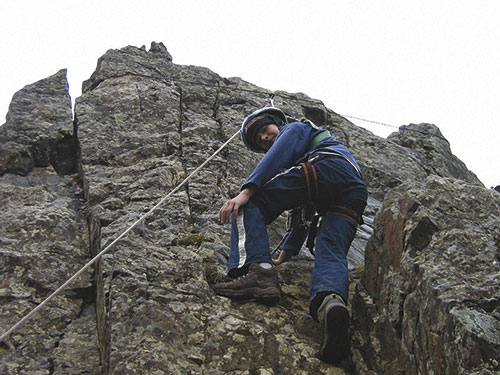
According to the order of GKChS from 21.10.92 №150 regional search and rescue services were founded, including the West-Siberian Regional Search and Rescue Service located in Barnaul, with a corps in Biysk. It included the search and rescue service of the Altai Republic and Kemerovo region, and later the newly-created search and rescue services of Omsk, Novosibirsk, and Tomsk regions, and a corps in Rubtsovsk.
Having been reorganized, the service was charged with undertaking more large-scale tasks, connected with helping people in distress not only in the conditions of harsh environment, but also in other emergencies connected with human activity.
From July 1, 1997 the West-Siberian Regional Search and Rescue Service was reorganized into the West-Siberian Regional Search and Rescue Corps, and from December 7, 1999 – into the West-Siberian Territorial Search and Rescue Service.
A search and rescue corps was created as a part of the Headquarters for Civil Defense and Emergency Situations Management in Altai Krai in 1998. The first group of rescuers was employed in April 1998. There were 20 charter members in it. Having passed their professional training in July 1998 the rescuers were accredited, and the corps started serving around the clock. They contributed greatly to the overall system of Russian System of Prevention and Response to ES. Since the moment of its foundation the rescuers of this corps work together with the West-Siberian search and rescue corps of EMERCOM of Russia, named after V.V. Zyukov – the branch of the FSI Siberian search and rescue corps of EMERCOM of Russia.
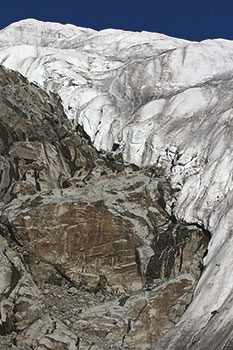
The search and rescue corps of the Regional public institution “The Department of Civil Defense and Emergency Situations Management and Fire-Safety in Altai Krai” has been headed by Evgeny Victorovich Petrusenko in the most recent years. He has considerable life-saving experience. From December 1994, Evgeny Victorovich worked in the West-Siberian regional search and rescue service. Later, when in 1998, the search and rescue corps was created as a part of the Headquarters for Civil Defense and Emergency Situations Management in Altai Krai, Petrusenko started working there reaching the chairman’s position in 2008.
Rescuers risk their lives daily to prevent the deaths of others. They are charged with saving all of us for us who have become victims of our own carelessness and negligence. Throughout the years of their labor, the Altai rescuers have proven many times that they can do anything, day or night, under dangerous circumstances or any emergency threats, they are ready to come and save people. And, as statistics show, people frequently need this assistance. (See below for the examples of several rescue operations headed by E.V.Petrusenko.)
The Altai Mountains is a very popular destination for active recreation. The staff at tourist centers and camps, offer to their guests a variety of activities, like rafting and excursions, horseback and ski tours and, are located in the most picturesque places in the region. Hundreds of tourist groups come annually to conquer the Altai Mountains. Adventurers conquer the local mountain peaks, challenge the rushing mountain rivers, or descend into the caves.
When people seek adventure often forget about their own safety. The mountain ranges attract amateur climbers with their majestic beauty, and these adventurers go with no fear of heights, or consideration of difficulties, and they are rarely mindful of the accident statistics.
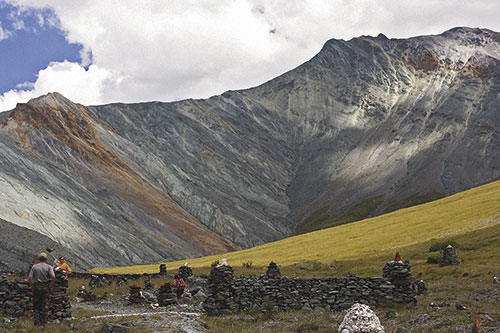
In February 1997 a group of tourists disappeared on the Belukha in the Altai Mountains. These thrill seekers, coming to conquer the Altai Mountains from Kemerovo Region, went a bit too far. Petrusenko took part in the rescue works on the Belukha Mountain at the altitude of 4000 meters above sea level. It is worth mentioning that he was a student of one of the universities of the Altai Krai and had been actively involved in tourism and mountain climbing. This hobby later grew into his profession. The rescuing of people can take place in different circumstances where climbing skills can become very useful. With such skills, at the altitude of 4000 meters, Petrusenko’s mountain-climbing experience helped save these people. Owing to the prompt and well-coordinated actions of the rescuing team, the tourists were successfully found and evacuated.
On August 22, 2002 during the educational preparation for the water-rescue camp, the search and rescue campsite was visited by a group of tourists, who informed them that a catamaran with two tourists on board was lost on the river Argut. The program of the camp was reorganized and combined with the search works. It took ten days to carry out the search on this difficult river. But the result was disappointing: only the remnants of the vessel and the tourists were still missing. According to the results of the search and rescue works conducted in 2002 the rescuers Petrusenko E.V. and Permyakov I.Y. were awarded a badge of merit of EMERCOM.
In 2005 near the lake Multa, the Katun Range, emergency staff conducted a search for a lost group of children.
In 2007 Petrusenko E.V. saved a person who fell from the cliff on the Ob River. Having descended the steep slope to the depth of 60 meters, he secured the victim with ropes, and helped to lift him out of danger.
In July 2009 Petrusenko E.V. managed the security post of the search and rescue corps on the river Katun. As a result of a heavy downpour of rain the level of the water in the river started rising, so rafting on the river became dangerous. When the first raft, with 10 tourists on board capsized, Petrusenko personally took part in saving four victims from the water and bringing them to the bank of the river.
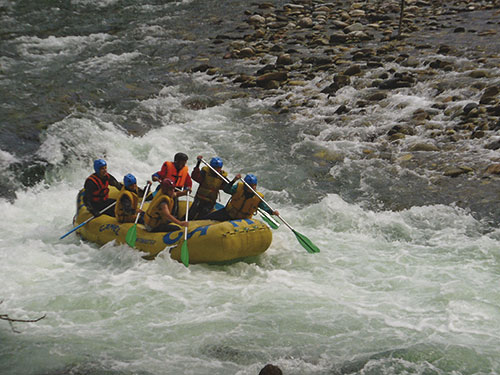
Right after that accident, two more boats capsized and 10 people fell into water. His skillful and efficient actions, as well as his bravery at the head of the search and rescue corps, helped to save these 14 people.
The first large-scale emergency, for which this special group had been formed to take part in, was the gas explosion of one of the houses on Novorossiyskaya street in Barnaul, on October 10, 2000. The explosion was reported by the eyewitnesses directly on the phone of the search and rescue corps officer, and two on-duty search and rescue teams arrived to the site within eight minutes. Having sized up the situation on the site, they reported to commanding officer on duty and the whole corps was alerted. The search for the victims and debris removal took 14 hours. As a result six people were saved, and the bodies of the three killed people were recovered. Following the results of the search and rescue works, the deputy head of the search and rescue corps Vinnikov S.E. was awarded the medal “To the participant of the rectification of ES”; the 1st class rescuer Petrusenko E.V. and the doctor-rescuer Parahin A.I. were awarded the badge of honor of the Siberian regional center.
Petrusenko is also a member of the Altai branch of the All-Russia non-governmental organization “Russian Rescuers’ Union”. The need for such an organization is driven by the realities of everyday life, when the role of the job of a rescuer is getting more significant every day. The main aims of “Russian Rescuers’ Union” are: the consolidation of the efforts of society in dealing with the problems of population safety and protection in times of emergency situations, the increase of the rescuers’ role in the development of search and rescue service in the Russian Federation, and partaking in the actions aimed at the protection and preservation of human life, objects and territories in case of emergency. “Russian Rescuers’ Union” defends the interests of rescuers, paying much attention to the securing of social benefits, support of rescuers-veterans, and helping their bereaved families.
Nowadays there are 81 regional branches of the “Russian Rescuers’ Union”, which include the rescuers of the federal, regional, municipal levels, as well as other departments and services. One of them is the Altai regional branch, with Petrusenko as its member.
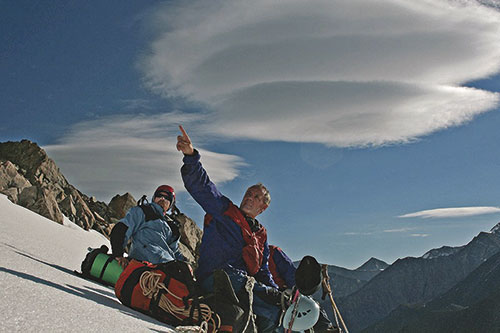
Conclusion
Russian classical writer Maxim Gorky once said “there is always a place for feats in life.” A rescuer is a person, who performs such feats every day. He sacrifices his health, and even life, to help all people in need. Risking their lives for the sake of other people, who are endangered, the rescuers often sacrifice precious time with their families at home. That is why being a rescuer is not a job but a calling. People choose this job only by vocation, just to look danger in the eye. And their relatives are proud of these fathers, husbands, brothers, and sons, even though they often worry about their safety. Dispassionate and uncommitted individuals never stay in the Emergency service for long. Yet, those who do are assured a lifetime of work, trustworthy and reliable compatriots, social security and stability.